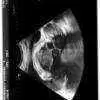-
Welcome to Celiac.com!
You have found your celiac tribe! Join us and ask questions in our forum, share your story, and connect with others.
-
Celiac.com Sponsor (A1):
Celiac.com Sponsor (A1-M):
-
Get Celiac.com Updates:Support Our Content
Fructose Malabsorbtion
-
Get Celiac.com Updates:Support Celiac.com:
-
Celiac.com Sponsor (A17):
Celiac.com Sponsor (A17):
Celiac.com Sponsors (A17-M):
-
Recent Activity
-
- Jmartes71 replied to Ginger38's topic in Related Issues & Disorders13
-
- knitty kitty replied to Ginger38's topic in Related Issues & Disorders13
-
- Flash1970 replied to Ginger38's topic in Related Issues & Disorders13
-
- chrisinpa commented on Scott Adams's article in Additional Concerns5
Gluten Transfer from Biodegradable Tableware: What a New Study Found and Why It Matters (+Video)
Oh my......will the danger never end? It has seemed like no matter what we do or have done the odds were/are against us. Next they'll tell us that just looking at wheat will be dangerous. Oh well....hang in there.- biodegradable
- celiac disease
- (and 8 more)




Recommended Posts
Archived
This topic is now archived and is closed to further replies.